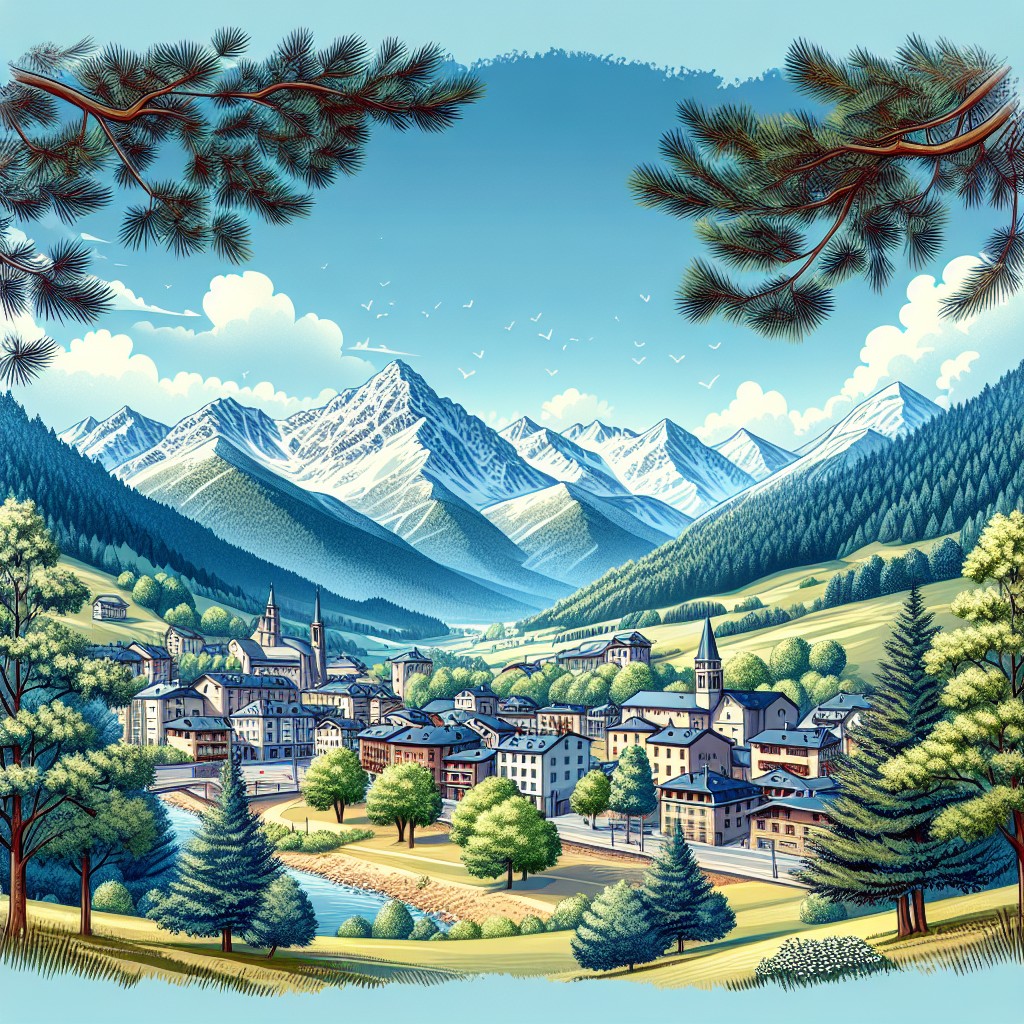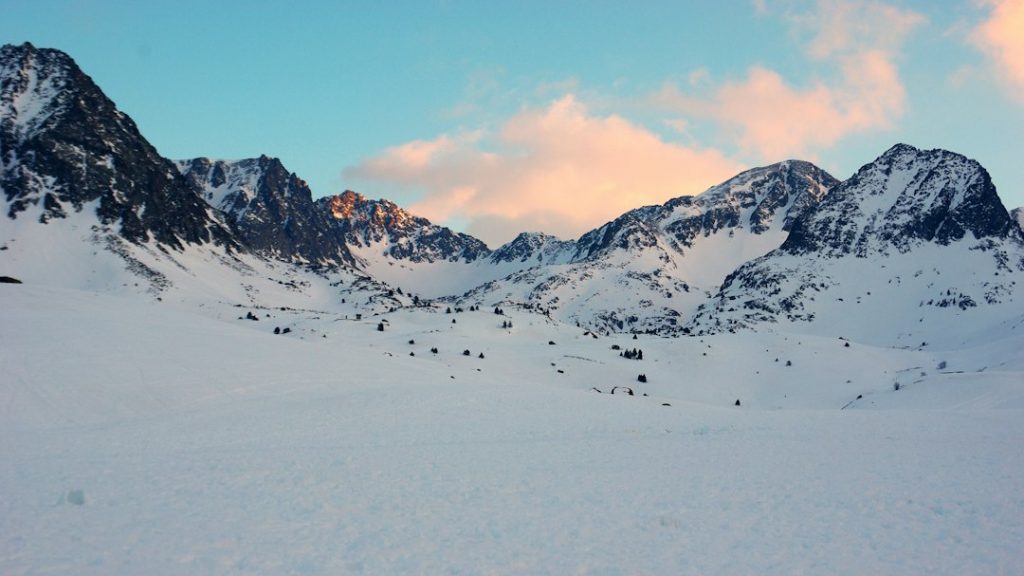Andorra, a small landlocked country nestled in the Pyrenees Mountains between France and Spain, may not be known for its abundance of natural resources. However, this picturesque nation is home to a variety of valuable resources that play a crucial role in its economy and environment. From forests and woodlands to mineral deposits and water resources, Andorra’s natural resources contribute to its biodiversity, tourism industry, and agricultural sector. In this article, we will explore the different types of natural resources found in Andorra, their significance, and the challenges and opportunities for sustainable management.
Summary
- Andorra is a small country with a diverse range of natural resources.
- Forests and woodlands cover over 40% of Andorra’s land area.
- Andorra has significant mineral resources including iron, lead, zinc and copper.
- The country’s water resources include rivers, lakes and springs, with potential for hydroelectric power.
- Sustainable management of Andorra’s natural resources is crucial for future generations.
Andorra’s Geographical Location and Natural Resources
Andorra’s geographical location in the Pyrenees Mountains has a significant influence on its natural resources. The country is characterized by rugged mountainous terrain, with peaks reaching over 9,000 feet. This unique topography provides ideal conditions for the formation of mineral deposits such as iron, lead, zinc, and copper. Additionally, the mountains are covered in lush forests and woodlands, which are home to a diverse range of plant and animal species.
Forests and Woodlands in Andorra
Forests and woodlands cover approximately 40% of Andorra’s land area. The country is known for its dense forests of oak, beech, pine, and fir trees. These forests not only provide a habitat for numerous wildlife species but also contribute to the country’s tourism industry. Visitors flock to Andorra to enjoy hiking trails, nature walks, and other outdoor activities in the midst of these beautiful forests.
Sustainable forest management practices are crucial for preserving Andorra’s forests for future generations. The government has implemented measures to ensure responsible logging practices that minimize environmental impact. These include selective cutting techniques, reforestation efforts, and protection of sensitive areas. By managing forests sustainably, Andorra can continue to benefit from their resources while preserving their ecological value.
Mineral Resources in Andorra: Iron, Lead, Zinc, and Copper
Andorra has a rich history of mining activities dating back centuries. The country is known for its mineral deposits of iron, lead, zinc, and copper. These resources have played a significant role in the country’s economy, particularly during the industrial revolution. However, with the decline of mining activities in recent years, Andorra has shifted its focus towards sustainable practices and environmental protection.
Current mining regulations in Andorra prioritize environmental conservation and responsible extraction methods. Strict guidelines are in place to ensure that mining activities do not harm the surrounding ecosystems. Additionally, efforts are being made to rehabilitate abandoned mines and restore the land to its natural state. By balancing economic interests with environmental concerns, Andorra can continue to benefit from its mineral resources while minimizing their impact on the environment.
Water Resources in Andorra: Rivers, Lakes, and Springs
Andorra is blessed with an abundance of water resources, thanks to its mountainous terrain and ample rainfall. The country is home to numerous rivers, lakes, and natural springs that provide a source of freshwater for both human consumption and agricultural purposes. These water resources are not only essential for sustaining life but also play a crucial role in supporting Andorra’s tourism industry.
The management of water resources in Andorra poses several challenges. The country relies heavily on tourism, which puts pressure on its water supply during peak seasons. Additionally, climate change and changing weather patterns can affect the availability of water resources. To address these challenges, Andorra has implemented measures such as water conservation campaigns, efficient irrigation systems for agriculture, and strict regulations on water usage.
Andorra’s Hydroelectric Power Potential
Andorra has significant potential for harnessing hydroelectric power due to its mountainous terrain and abundant water resources. Currently, the country relies on hydroelectric power for a significant portion of its energy needs. Several hydroelectric power plants are in operation, utilizing the flow of rivers and streams to generate electricity. This renewable energy source not only reduces reliance on fossil fuels but also contributes to the country’s efforts to combat climate change.
The future of hydroelectric power in Andorra looks promising, with opportunities for further development and expansion. The government is exploring the possibility of building new hydroelectric power plants and upgrading existing infrastructure to increase energy production. By tapping into its hydroelectric power potential, Andorra can continue to meet its energy needs in a sustainable and environmentally friendly manner.
Tourism and Natural Resources in Andorra
Andorra’s natural resources play a vital role in its tourism industry, which is a significant contributor to the country’s economy. The stunning landscapes, pristine forests, and crystal-clear lakes attract millions of visitors each year. Tourists come to Andorra to enjoy outdoor activities such as skiing, hiking, and mountain biking, all of which rely on the country’s natural resources.
Sustainable tourism practices are essential for preserving Andorra’s natural resources while still benefiting from tourism. The government has implemented measures to minimize the environmental impact of tourism activities, such as promoting eco-friendly accommodations, encouraging responsible waste management, and educating visitors about the importance of conservation. By adopting sustainable tourism practices, Andorra can ensure that its natural resources continue to attract visitors for generations to come.
Agriculture and Livestock in Andorra
Agriculture and livestock farming have been an integral part of Andorra’s economy for centuries. The country’s fertile valleys and meadows provide ideal conditions for cultivating crops and raising livestock. Agriculture in Andorra primarily focuses on the production of cereals, vegetables, fruits, and dairy products.
Natural resources such as fertile soil, water resources, and favorable climate are essential for sustaining agriculture in Andorra. Farmers rely on these resources to grow crops and raise livestock. Sustainable agriculture practices, such as organic farming and crop rotation, are crucial for preserving the health of the soil and minimizing the use of chemical fertilizers and pesticides. By adopting sustainable agriculture practices, Andorra can ensure the long-term viability of its agricultural sector while protecting its natural resources.
Challenges and Opportunities for Sustainable Natural Resource Management in Andorra
While Andorra is blessed with abundant natural resources, it also faces several challenges in managing them sustainably. The country’s small size and limited resources make it vulnerable to external factors such as climate change, economic fluctuations, and changing tourism trends. Additionally, balancing economic development with environmental conservation requires careful planning and collaboration between stakeholders.
However, Andorra also has opportunities to overcome these challenges and achieve sustainable natural resource management. The government can invest in research and innovation to develop new technologies and practices that minimize environmental impact. Collaboration between government agencies, local communities, and businesses is crucial for developing comprehensive strategies for sustainable resource management. By working together, Andorra can ensure the long-term preservation of its natural resources for future generations.
The Importance of Protecting Andorra’s Natural Resources for Future Generations
In conclusion, Andorra’s natural resources are a valuable asset that contributes to its economy, environment, and quality of life. From forests and mineral deposits to water resources and renewable energy potential, these resources play a crucial role in sustaining various sectors of the country. However, it is essential to manage these resources sustainably to ensure their long-term viability.
Protecting Andorra’s natural resources requires a collective effort from government agencies, local communities, businesses, and visitors. By adopting sustainable practices in forestry, mining, water management, tourism, and agriculture, Andorra can strike a balance between economic development and environmental conservation. This will not only benefit the current generation but also ensure that future generations can enjoy the beauty and abundance of Andorra’s natural resources.
FAQs
What are the natural resources of Andorra?
Andorra’s natural resources include timber, iron ore, lead, zinc, copper, and hydroelectric power.
Where are the natural resources located in Andorra?
The timber resources are located in the forests of the Pyrenees Mountains. The iron ore, lead, zinc, and copper deposits are found in the eastern part of the country. Andorra’s hydroelectric power is generated from the rivers and streams that flow through the country.
How is timber used in Andorra?
Timber is used for construction, furniture making, and paper production in Andorra.
What is iron ore used for in Andorra?
Iron ore is used to produce steel, which is used in construction, manufacturing, and transportation.
What is lead used for in Andorra?
Lead is used in the production of batteries, ammunition, and radiation shielding.
What is zinc used for in Andorra?
Zinc is used in the production of alloys, such as brass and bronze, and in the production of galvanized steel.
What is copper used for in Andorra?
Copper is used in the production of electrical wiring, plumbing, and coins.
How is hydroelectric power generated in Andorra?
Hydroelectric power is generated by harnessing the energy of flowing water to turn turbines, which then generate electricity. Andorra has several hydroelectric power plants that generate electricity for the country.


